In a recent blog post we asked the question “Do we really need lawns?” and gave some detailed answers as to why we most definitely do. Now, we’re taking a look at artificial grass, to answer a question which is asked of us occasionally; “Is artificial grass a good thing?”. As lawn care specialists, we know we’re biased on this point. Of course, we’re bound to say that fake grass is no substitute for the real thing. Putting our favouritism to one side for a moment though, there are many really good reasons why artificial grass is a bad thing…
The ‘No Maintenance’ myth
To kick things off, let’s start with busting the ‘no maintenance’ myth. As far as the domestic market is concerned, artificial grass has always been sold on the basis that it offers householders the opportunity to have a lawn without the need to mow it, feed it or weed it. The plastic lawn merchants would have you believe that you simply install it and forget about it. WRONG! Whilst you won’t have to cut a plastic lawn, you will have to clean it frequently. This means either using a vacuum cleaner or, more often, a hosepipe and stiff brush. The ridiculous thing about this is that you could end up using more tap water cleaning a fake lawn than it takes to sustain a real one!
Aside from the need to clean a plastic lawn (and you will, because they end up stinking horribly after a while), you may be surprised to learn that they are also likely to sustain the growth of moss as grass does. Moss is perfectly happy living on plastic surfaces, as you’ve probably seen on structures like conservatory roofs and smoking shelters, so it constitutes as big a problem on artificial grass as it does on the real thing.
Even more surprising (heartbreaking, even) is the fact that an artificial lawn can be afflicted by weeds too! Just as the little blighters can grow through horticultural membrane, so too they can force their way through gaps in fake grass and pitch in to areas that are not regularly cleaned.
Finally, just to compound the maintenance misery, artificial grass is easy to damage. Anything either sharp or hot will do the trick, and you’ll need to call someone out to fix it. To summarise, a plastic lawn will require just as much maintenance as a real one.
Environmental impact
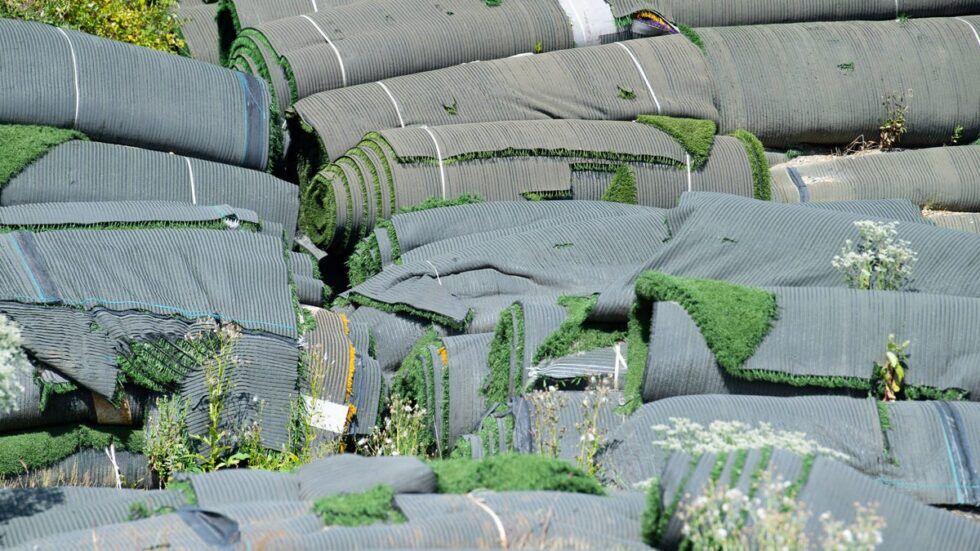
Dumped astro turf, no longer in use but leeching toxins into the ground every day while it waits for a viable recycling method to be developed. (Picture courtesy of York Daily Record, USA.)
If anything, we should have led with this topic as this is one can of worms which is blindingly, fundamentally obviously wrong to tamper with. When plastic sports pitches were first launched, they seemed to offer an all-round solution to sporting centres and clubs which were trying to operate for 12 months every year. It was only when somebody thought of appealing to the “maintenance free” nature of some householders that the domestic market for plastic grass was born. If we were all as environmentally aware then as we are now, it would never have taken off as it did. Put simply, artificial grass is an environmental disaster. As our ‘Do we really need lawns?’ feature explained, domestic lawns have a huge role to play alongside trees, hedges and open fields as ‘the lungs of the planet’. Natural grass lawns absorb harmful Carbon Dioxide (Co2), and recycles it as oxygen. We pointed out in that blog post that a 225 square metre lawn provides enough oxygen to sustain a family of four people every day. Compare and contrast this good news with the awful truth that the manufacture of plastic grass is responsible for generating vast amounts of Co2 in its manufacture. That is before it needs to be distributed, stored and ultimately transported to its destination, all of which are responsible for the consumption of more fossil fuels. So, unlike a natural grass lawn which soaks up and traps harmful gases every day, plastic grass does nothing to dissipate them. On the contrary…
The horror story does not end there, as plastic lawns have a finite life span. While a natural lawn will be good for decades with some TLC, artificial grass has to be replaced every 7 years or so to keep it at it’s best. The prospect of all those harmful gases being generated in the production of yet more toxins in the form of the plastic end product is bad enough, but there’s yet more misery in store for Mother Earth. While the fake lawn itself only has a lifespan of 7 years or so, the toxins leeching into the surrounding soil from the various plastics in its construction will continue to cause damage for centuries.
Can you believe this sorry tale can get even worse? We’re afraid it can. Astro turf’s construction is quite complex, involving at least three different plastics (polypropylene, nylon and polyethylene). Separating these elements to recycle them is immensely complicated, so there are very few facilities anywhere in the world capable of making it happen. They are obviously specialised and expensive to set up and operate. As a result, there are huge mountains of discarded plastic turf all around the planet, waiting for someone to do something with it. That doesn’t look like it’ll be happening anytime soon, so all those rolls of filthy plastic are very slowly hemorrhaging toxic chemicals into the earth, 24/7.
Wildlife habitat
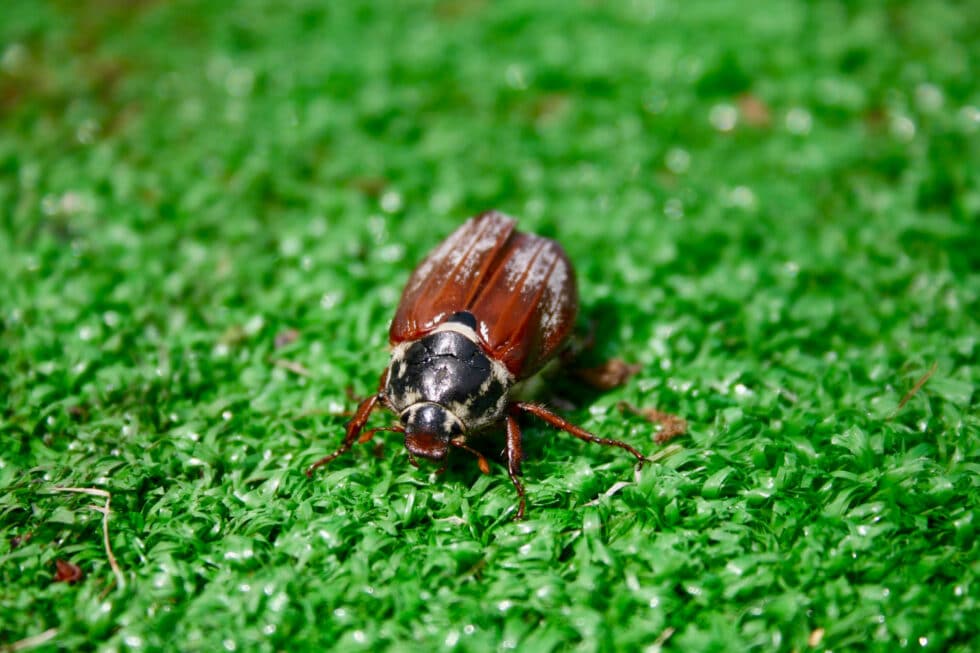
Plastic lawns not only provide no habitat for life of any kind (other than the moss and weeds described above), they also snuff out all of the important life which thrives in the soil under a natural lawn. This eco-system is a vital part of the circle of life, and the installation of artificial turf will cancel it out in an instant.
Expense

Artificial is not immune to the damage caused by its inability to drain floodwater away.
The cost of simply installing a new artificial lawn is far greater than that of a new real lawn. When you start to add the costs of cleaning, repairing and disposing of that plastic grass it really mounts up, before you even start to think of a replacement.
In fact, for less than the cost of installing a new fake lawn you can engage a specialist lawn care company to maintain a real lawn of the same size for five years, which is way longer than it would have taken for the fake grass to look grimy and tatty.
Risk of injury
Anyone who has ever played sports on an Astro turf pitch will know how painful it is when you trip or slide on it. Granted, there have been developments over the years resulting in some brands which are less hazardous, but the fact remains that a hard plastic surface will always be more painful to land on than a naturally soft one. If you have play apparatus in the garden for your children, you can always put down bark chips as a softer, natural alternative to Astro turf.
Risk of flooding
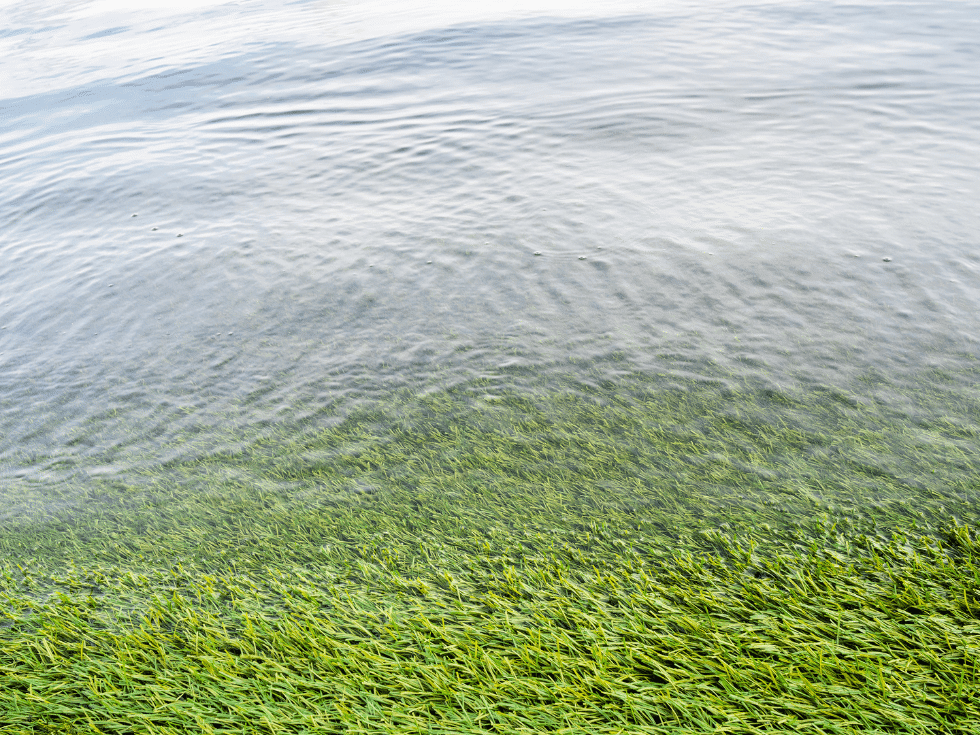
It’s not uncommon to see plastic lawns flooded like this. Is it any wonder?
As mentioned in our previous blog post, a natural lawn will assist in the safe drainage of rainwater. Some brands of artificial turf may have some holes in its matting, but will never allow anything like the same volume of water through to the soil underneath. Instead, this rainfall will just overwhelm the Astro turf and pool on top, with nowhere else to go.
It’s not an all-year-round solution, after all
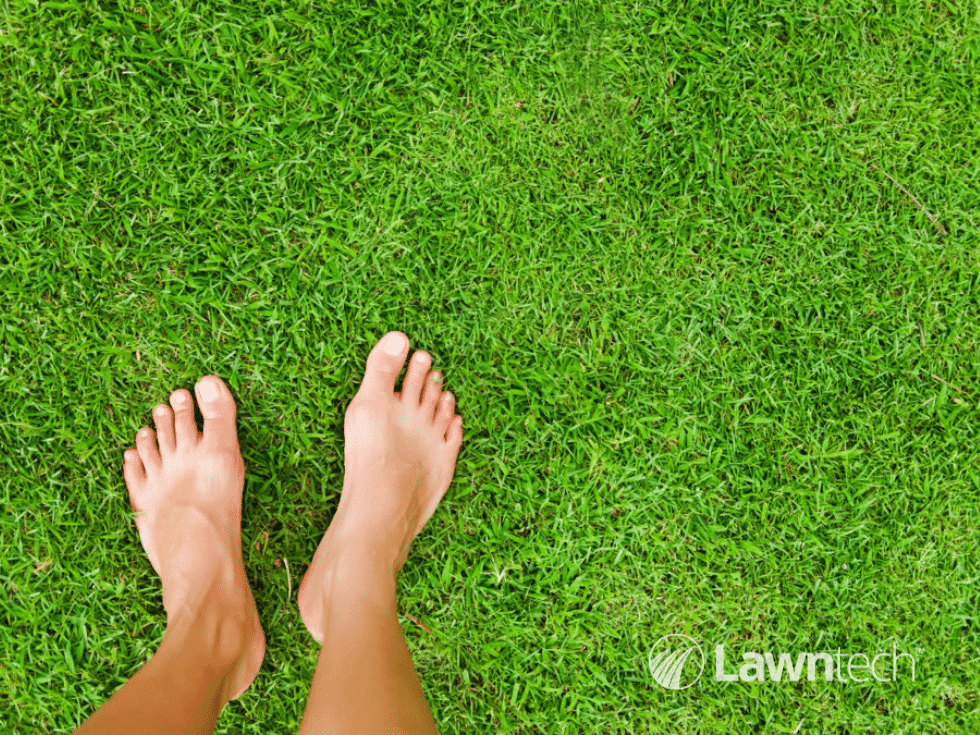
You can’t do this on an artificial lawn when it’s hot!
Again, our earlier blog post makes a point about natural grass’ ability to stay cool when ambient temperatures rise, whereas plastic just keeps on getting hotter. Cheaper brands in particular will be unusable on a hot day, as you will simply be unable to walk on it without footwear. This is particularly galling if it means your children and pets are missing out; just when you all want to be able to enjoy that lawn, you’ll have to keep off it!
The way it looks
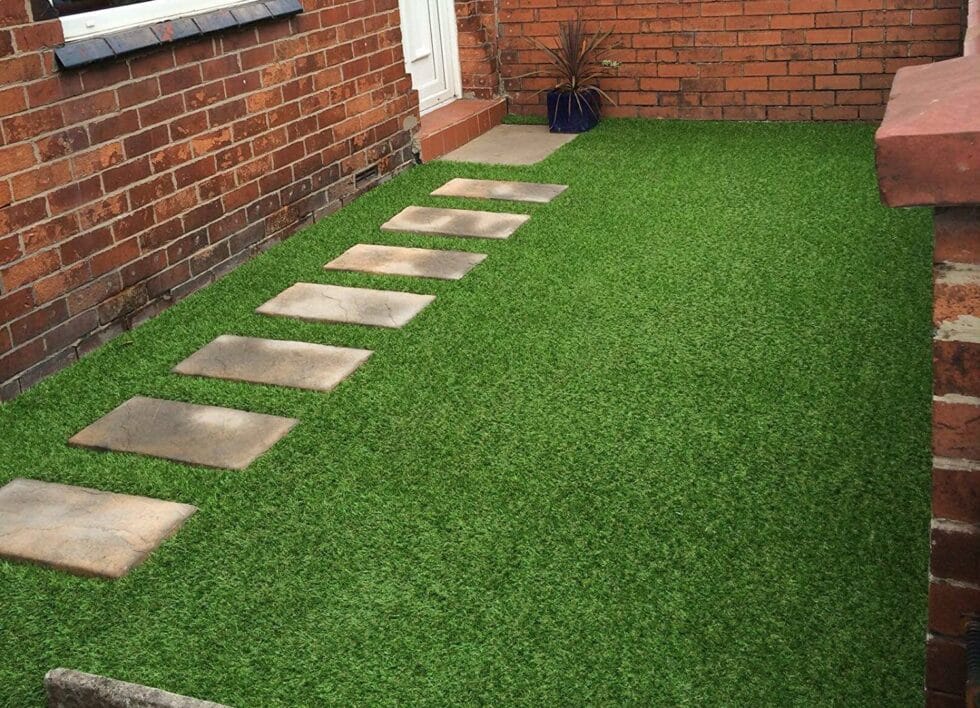
Beauty is in the eye of the beholder!
I know this point is entirely subjective, but here goes…
The unnatural, consistent texture of plastic ensures that once you’ve chosen the colour and pattern of your lawn, it will look the same every time you clap eyes on it. It will not be any longer, shorter nor will it change colour. Apart from its inevitable decline into a tatty has-been, it will not change the way it looks in the way a natural lawn will. The fact that real grass is growing every moment of every day and changes its shade depending on the weather, cannot be mimicked by Astro turf. We understand that this very consistency of looks is one reason why some people choose an artificial lawn; their grass will look the same every time they look out of the window at it. But what about those areas in a garden where grass is not supposed to grown thick, green and lush? Under a broad tree, for example. Artificial grass looks out of place there and in many other areas. It just looks wrong.
To sum all this up, artificial grass is no substitute for a real lawn. People have been drawn to it because they think a real lawn is too much like hard work. It’s OK to choose not to carry out the maintenance of a lawn yourself, that’s your prerogative. But in the weight of all the evidence above, wouldn’t you rather invest in some professional lawn care with the money you’d save by having a proper lawn?
Not only would you be saving yourself some cash, but helping to lessen the damage caused to the planet too.
If you would like a quote for Lawntech to take care of your real lawn, please visit this page on our website, measure your lawn and we’ll send you an instant, no-obligation estimate;
Or, if you’d prefer to speak with a real person, feel free to Contact Us on 01722 744300.



